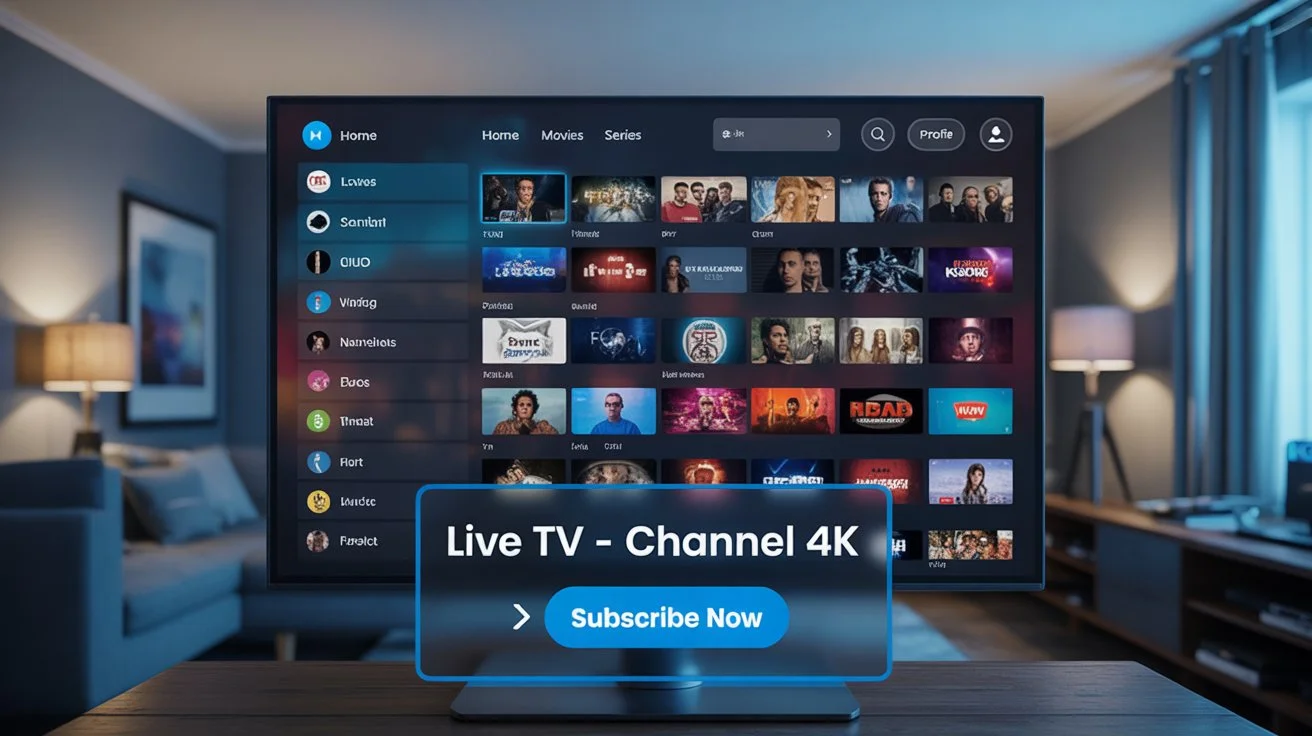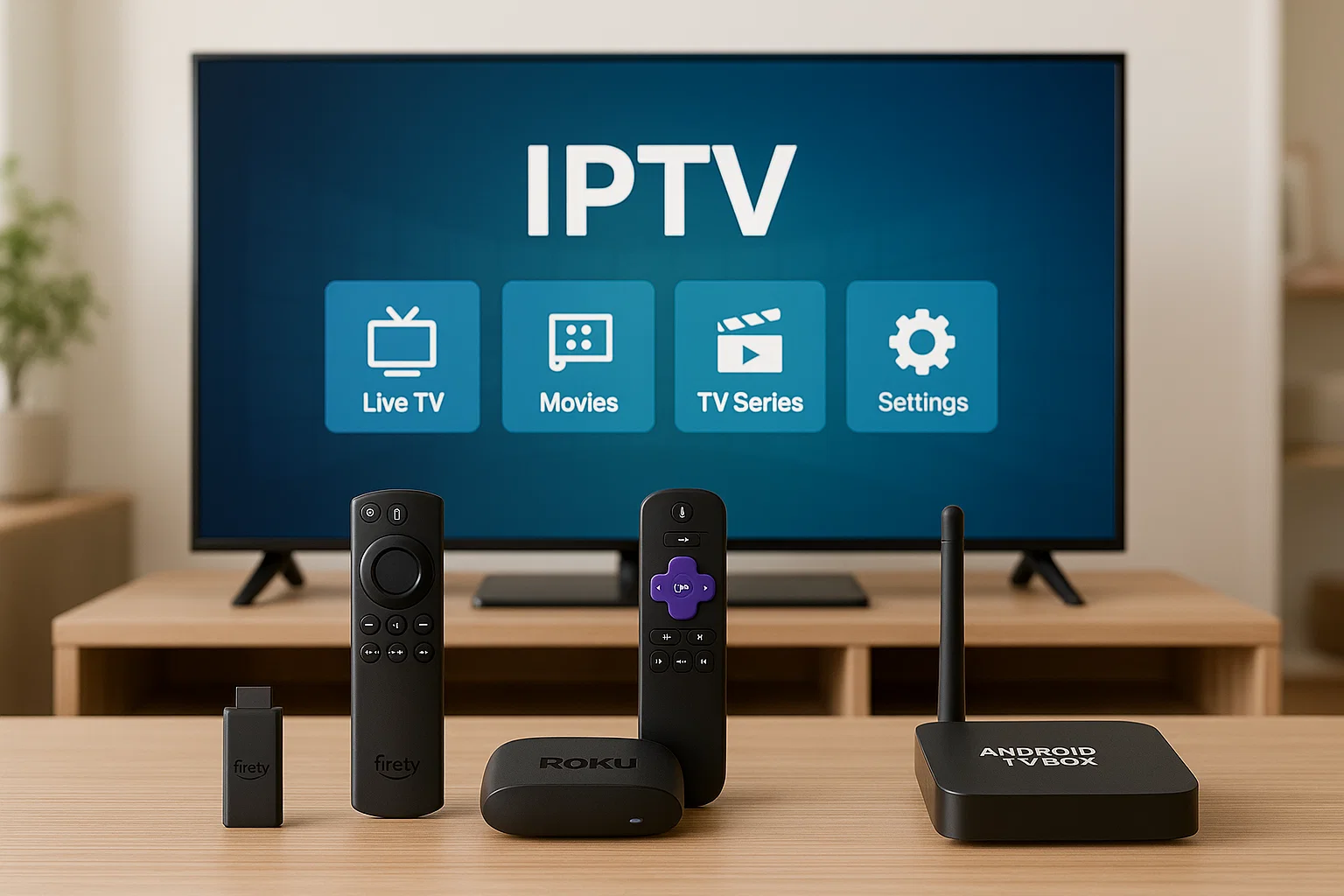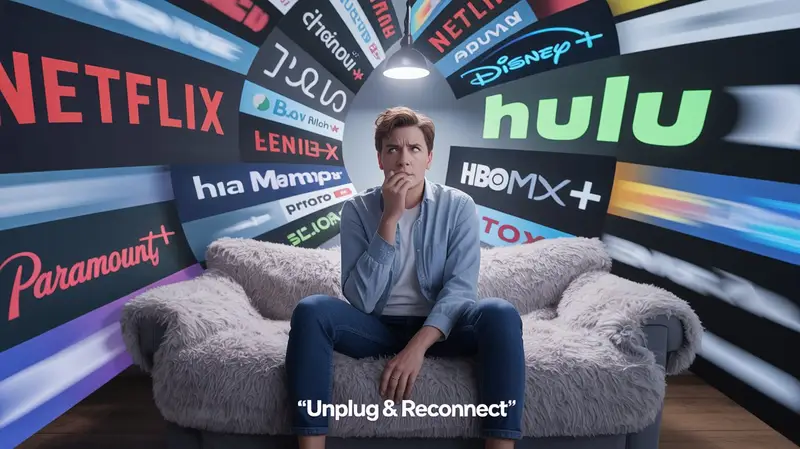Introduction
The digital entertainment landscape has evolved drastically, and IPTV 4K is now spearheading a new revolution. In 2025, viewers demand ultra-high-definition (UHD) picture quality, flexible on-demand options, and affordable alternatives to pricey cable subscriptions. IPTV (Internet Protocol Television) delivers all that—plus live TV, catch-up, and personalization—all through a standard internet connection.
Imagine transforming your living room into a cinema with clearest possible visuals, seamless playback, and content that adapts to your schedule and taste. Whether you’re a movie buff, a binge-watcher, or a sports enthusiast, IPTV 4K is reshaping how we consume video. And with 2025 trends pushing for AI curation, smart home integration, and interactive experiences, IPTV 4K is positioned not just as another streaming technology—but as the cornerstone of tomorrow’s media ecosystem.
What is IPTV 4K?
IPTV, or Internet Protocol Television, refers to the delivery of television content via IP networks instead of traditional terrestrial, satellite, or cable formats. IPTV 4K elevates this by delivering content at resolutions up to 3840×2160 pixels, offering four times the detail of standard HD.
This UHD clarity translates into deeper blacks, richer colors, sharper edges—every visual element becomes more vivid and immersive. Beyond resolution, IPTV provides on-demand video, catch-up services, live streaming, and even cloud DVR—all controlled via your remote or smartphone. It democratizes content delivery, making cinematic quality and ultimate viewing flexibility accessible to tens of millions worldwide.
Why IPTV is Gaining Ground in 2025
Affordability vs. Cable & Satellite
Cable and satellite services continue to jack up prices while offering fixed channel bundles—forcing you to pay for channels you don’t watch. In contrast, IPTV providers often use à la carte or simplified bundles, significantly reducing costs.
With IPTV 4K, you get UHD streaming at a fraction of the price—no hardware rental fees, no long-term contracts, and far more control over your subscription choices.
Customizable Menus & Content Bundles
IPTV empowers viewers to pick specific channels and VOD content—sports, kids’ programming, international channels—tailoring your package to fit your needs. No more paid-for channels gathering digital dust.
This modular approach means you’re only subscribing to what you actually watch, which cuts waste and boosts satisfaction.
Ubiquitous Device Access
IPTV streams beautifully across numerous devices—4K Smart TVs, Fire TV, Android boxes, tablets, even mobile phones. It’s picture-perfect and consistent, whether you’re relaxing at home or catching up on the go.
This universal compatibility makes IPTV ideal for modern, multi-device lifestyles.
How IPTV 4K Works
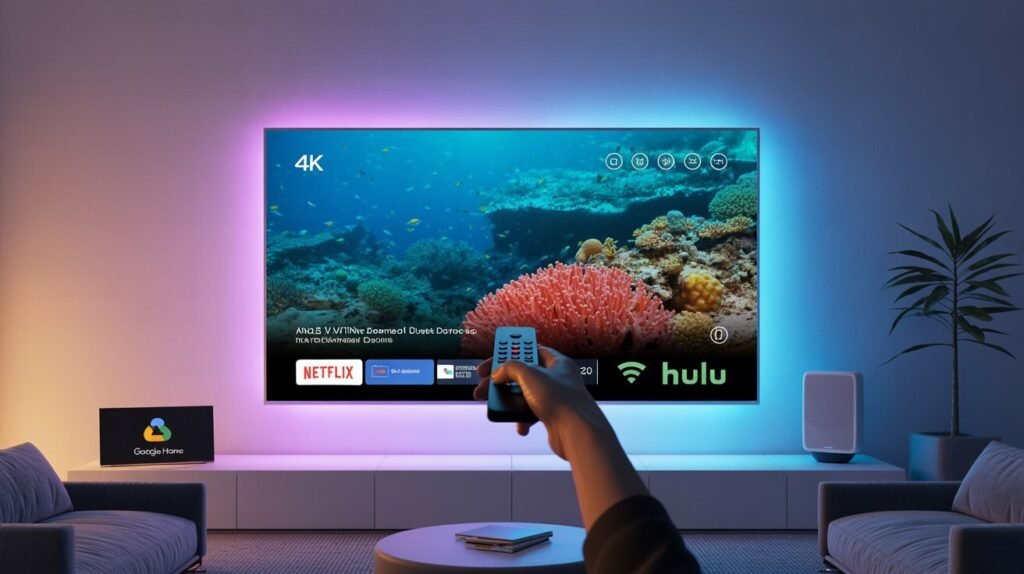
Streaming Over the Internet
IPTV content is broken down into tiny data packets and routed via your broadband connection. A Smart TV or streaming device—equipped with an IPTV app—reassembles these packets into a smooth, high-resolution video stream.
Streaming in 4K uses advanced codecs like HEVC/H.265 to compress UHD video efficiently, reducing bandwidth without compromising quality.
Role of CDNs (Content Delivery Networks)
CDNs leverage a global network of servers to cache and deliver content closer to your location. This minimizes buffer times and reduces latency—key for uninterrupted 4K streaming.
The better your provider’s CDN setup, the smoother your viewing experience.
IPTV vs. Cable/Satellite
- Delivery: IPTV uses internet, cable uses coaxial or satellite dishes.
- Control: IPTV is on-demand and non-linear; cable is linear and schedule-based.
- Interactivity: IPTV supports live pause, rewind, DVR, VOD; cable is typically passive.
- Cost: IPTV is usually subscription-based without hardware rentals or hidden fees.
Benefits of IPTV 4K
Ultra‑HD Cinematic Experience
With 4K resolution and HDR support, IPTV delivers visuals rivaling cinema screens. Expect crisp details and lifelike color—perfect for sports, nature documentaries, and blockbuster films.
Cost Efficiency
IPTV eliminates cable box rentals, technician visits, and expensive contracts. You subscribe online, stream via your device, and pay only for what you watch—typically saving 40–60% over traditional TV bills.
Flexibility & Control
- Watch on-demand or live
- Record and rewind shows
- Compatibility across devices
- Personalized playlists and profiles
IPTV adapts to your lifestyle, not the other way around.
IPTV 4K vs. Other Streaming Platforms
IPTV vs. Netflix, Disney+, Prime Video
| Feature | IPTV 4K | Netflix/Disney+/Prime Video |
|---|---|---|
| Live TV | ✅ Yes | ❌ No |
| 4K Content | ✅ Yes | ✅ Yes (select titles) |
| Custom Channel Packs | ✅ Yes | ❌ No |
| DVR/Time-Shift | ✅ Yes | Limited |
| Subscription Cost | Lower, no hardware fees | Variable |
IPTV combines live TV and VOD in one package—no jumping between apps.
Content Personalization & Control
IPTV apps let you tailor your guide layout, channel list, and profile settings. Many also integrate with voice control, smart home devices, and AI-based suggestions—the future of compelling entertainment is being built today.
User Autonomy
Choose what you pay for—sports, foreign language channels, kids, news—without bloated bundles. Control your subscriptions, your device, and your schedules entirely.
2025 Streaming Trends Shaping IPTV
AI‑Powered Recommendations
IPTV providers now use machine learning to analyze viewing behavior—time of day, content type, past preferences—then curate lineups accordingly. This predictive personalization keeps you engaged while reducing decision fatigue.
Smart Home & Voice Integration
IPTV taps into Alexa, Google Assistant, and HomeKit. Use voice commands to switch channels, search content, or set reminders. Some models even integrate with smart lighting: your TV dims the lights automatically when a movie starts.
Sports & Live‑Event Focus
Sports fans, rejoice: many IPTV services now offer dedicated sports modules—live event calendars, multi-angle streaming, and Integrations with Fantasy Football platforms. This delivers stadium-level access from your living room in UHD quality.
Challenges Facing IPTV 4K
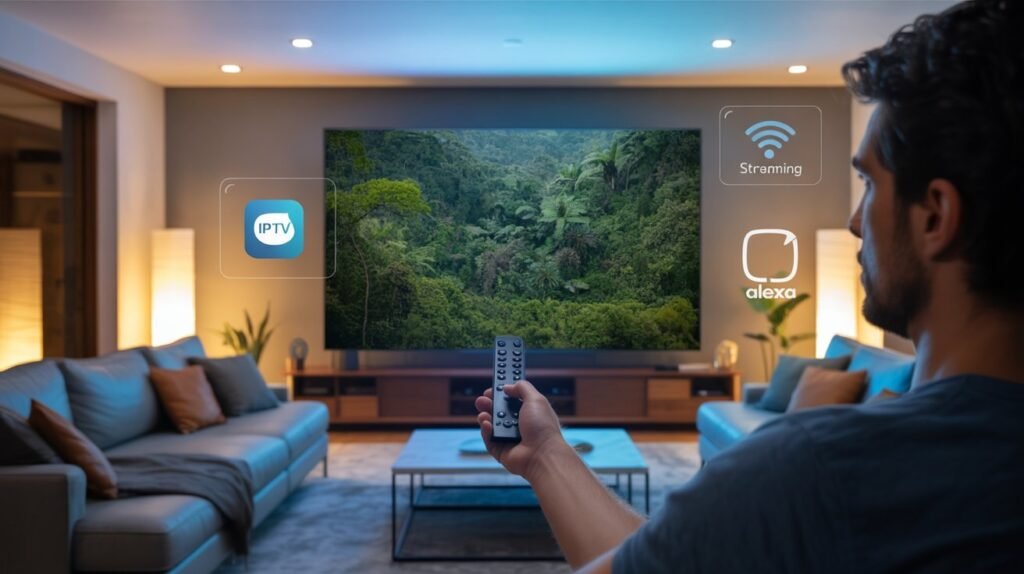
Legal Grey Areas & Piracy Worries
Not all IPTV services are above board—some resell unlicensed streams or infringe copyrights. Always choose reputable providers with transparent licensing and clear domicile.
Dependence on Internet Speeds
4K streaming requires consistent broadband—ideally 25 Mbps+ per stream. Slower or unstable connections degrade quality or cause buffering. Rural users and peak-hour congestion can be limiting factors.
Reliability & Uptime
Because IPTV is internet-based, any broadband outage or server issue affects all your streams. Choose providers with robust CDNs, 24/7 support, and real-world reliability.
Choosing the Best IPTV 4K Provider in 2025
Key Features to Look For
- 4K/HDR support with reliable performance
- Officially licensed content
- Light, intuitive custom apps (Android, iOS, Fire TV, etc.)
- Cloud DVR + catch-up + time-shift options
- AI-powered suggestions
- Smart home/voice compatibility
- Transparent (no hidden fees) pricing
Recommended IPTV Services
While local service availability varies, reputable providers often include:
- Provider A – Licensed sports packs, 4K/HDR, home automation integrations
- Provider B – Affordable basic + premium channels, AI-library suggestions
- Provider C – Cloud DVR enabled, multi-device streaming, strong support
Evaluate by trial periods, and review supported devices and SLA uptime.
Subscription Models & Cost
Expect pricing in the $10–$30/month range for basic UHD access. Premium bundles with sports or international channels may cost more, but still undercut bundled brass cable plans. Long-term savings come primarily from customizable packages and no hardware fees.
Future of IPTV Beyond 2025
8K Streaming on the Horizon
As 8K TVs become mainstream, IPTV services are gearing up for 7680×4320 streams. Bandwidth demands rise sharply—10–20 Gbps per stream—but advancements in compression (like AV1 codec) will make it feasible later this decade.
Decentralized & Edge‑Server Delivery
Edge Compute technology—bringing servers physically closer to your home—and blockchain-based peer-to-peer caching will further boost speed and reliability. This decentralized future envisions ISP-free latency reductions and enhanced resilience.
AI‑Generated Content & Interactive Experiences
The next frontier? AI-generated movies, true choose-your-own-adventure interactivity, and realtime crowdsourced smart content. IPTV networks, already built for personalization and interactivity, are primed for this shift.
Conclusion
IPTV 4K isn’t just an over‑the‑top streaming option—it’s an emblem of the future of media. In 2025, it combines cinematic clarity, live TV, flexibility, and customization into one user-centric experience. As cable gets more restrictive and subscription fatigue rises, IPTV delivers where it matters most—control, value, and innovation.
If you want UHD clarity, flexible content, and long-term savings, investing in IPTV 4K means you’re not just watching TV—you’re entering the streaming frontier.
FAQs
- What is IPTV 4K vs regular IPTV?
IPTV 4K supports Ultra-HD video (3,840×2,160 px) at 25–60 fps, using advanced codecs and CDNs. Regular IPTV might stream at full HD or SD. - Is IPTV 4K legal in my country?
It depends—always check licensing claims. Opt for providers with registered copyright agreements to avoid infringing services. - Do I need special hardware?
You only need a 4K-capable TV or media box + stable internet. Many apps (TiviMate, IPTV Smarters) work across devices seamlessly. - How much broadband speed is required?
For smooth 4K streaming, aim for at least 25 Mbps per stream. Faster speeds and reliable low-latency connections improve your experience. - What’s the next frontier after IPTV 4K?
Expect 8K streaming, AI-curated content paths, decentralized servers, edge compute, and interactive smart experiences by late 2020s.
Discover IPTV 4K, break free from clunky cable straps, and immerse yourself in tomorrow’s ultra-HD experience—today.

